I’ve written about several vintage sewing machines that I’ve fixed up. I love working on them and I learn a few new lessons with each new machine I take on. These old machines were made to last and I’m hoping to pass on the love to others. I’ve got enough of my own, so I have started getting machines to fix up with or for friends. This one is my first to give away to a friend who wants to learn to sew.
I have a love hate relationship with this vintage sewing machine. That is, I used to hate it and now I like it.
It is a Singer Stylist 457, vintage ’70s machine that was made in Great Britain. Since I saw its twin on a season 1 episode of The Cosby Show, I really like it. You can see pics of it here and a clip of the hilarious episode here. I love Cosby and it’s one of my favorite episodes. They must have had to cover up the Singer logos for the show. This model has a drop in bobbin and uses class 66 bobbins, something I was not familiar with.
I got it for $15 from a very sweet elderly lady who’s house had the orange shag carpet to match the era. I can tell someone loved this machine, took great care of it, and sewed miles on it. It needed a good cleaning up on the inside, some new rubber feet, and new spool pins, but when that was all done, the machine still gave me trouble every time I looked at it. I couldn’t figure out what was wrong. Finally I threw my hands up and let it sit for a while. I would occasionally think about it, look at it again, and get completely frustrated again with what seemed to be major tension issues. I finally did find out what the problem was, and it had resulted from pure use. I took apart the bobbin case and under the tension spring (that is supposed to press against the thread to achieve the right tension) was a groove. Those miles of thread that this machine had sewn, had worn a groove into the steel case until the spring could no longer press against the thread. My husband was able to machine the groove out and now it sews like new.
It is my first machine from the interesting era when sewing machines first started to have plastic parts. It has two plastic gears in it, and the rest is all metal of the inner workings. The top panel, thread spools, faceplate and other little cosmetics are plastic as well. Commonly the plastic internal gears are broken but I was happy to find these intact. It is not as versatile (sewing on heavy fabrics may be too much for the plastic gears) but it is a nice machine. It is my only Singer, and it’s nice to have had one. If you ever find yourself needing resources for such a machine, all the manuals for Singer machines are available for free download from Singers website and there are more than a few groups on yahoo devoted to fixing them up.
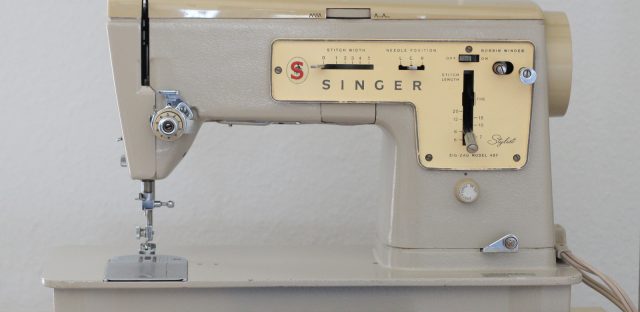
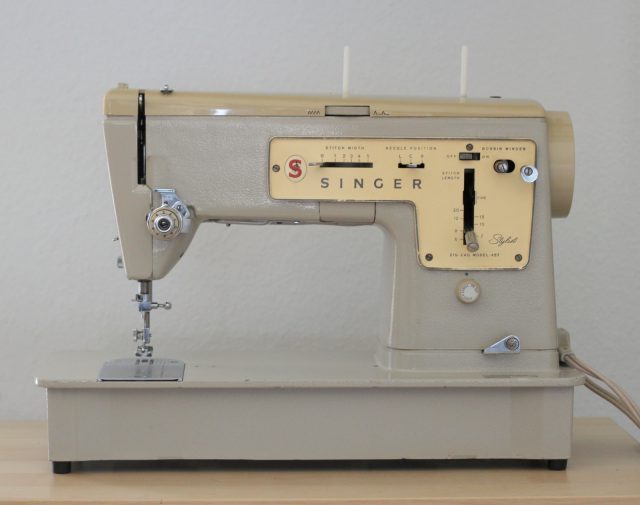
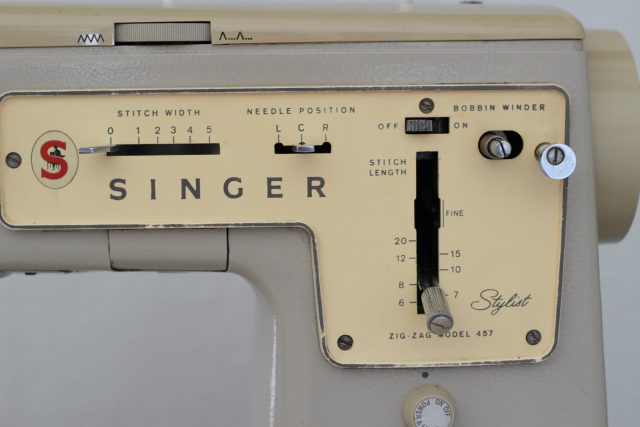
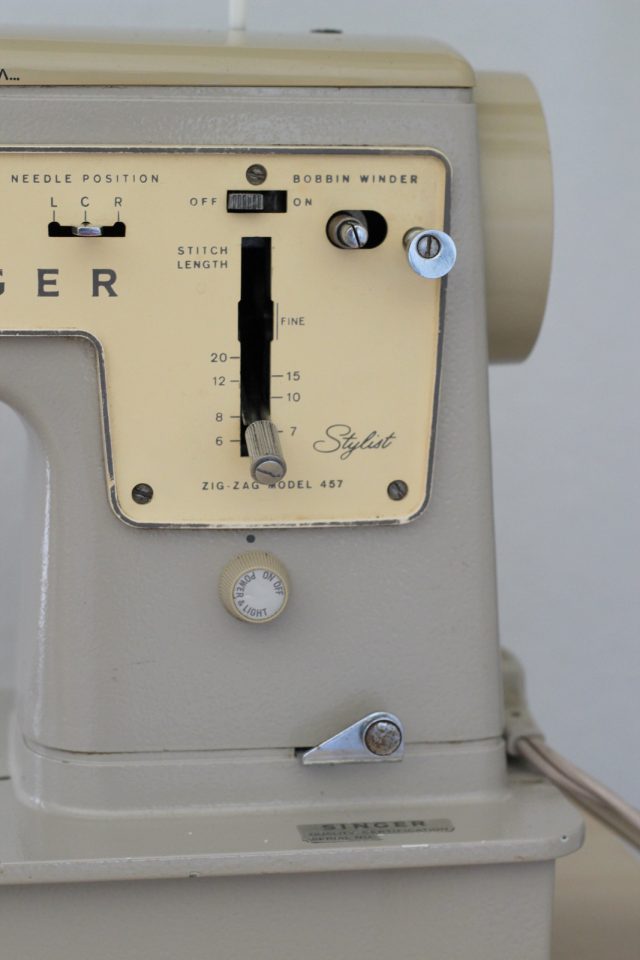
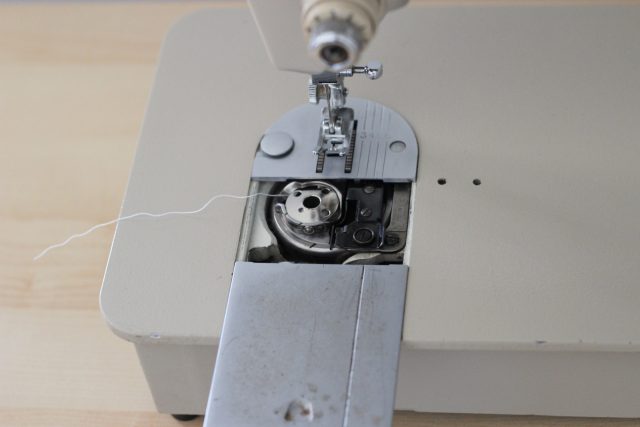
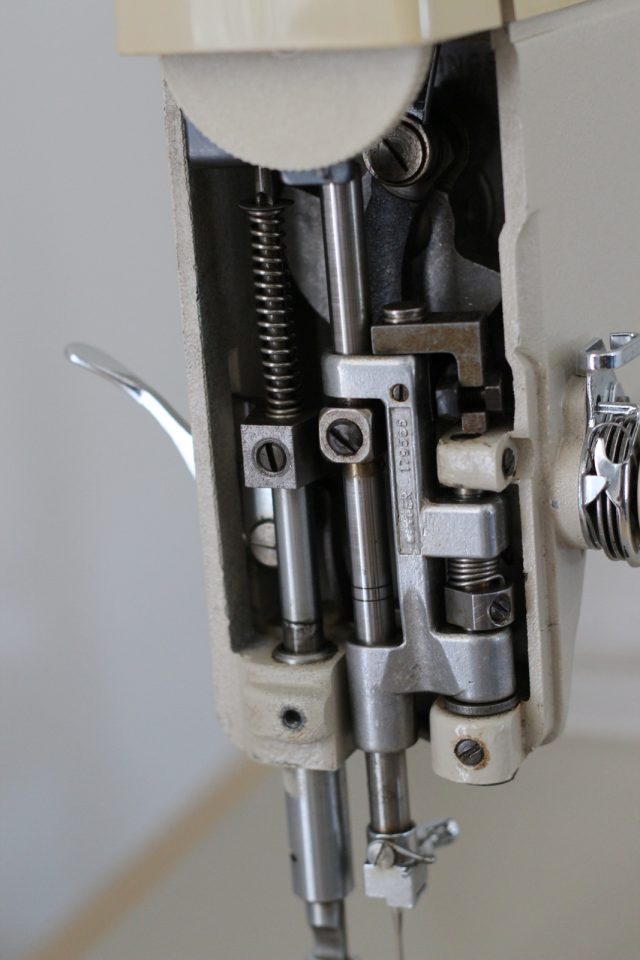
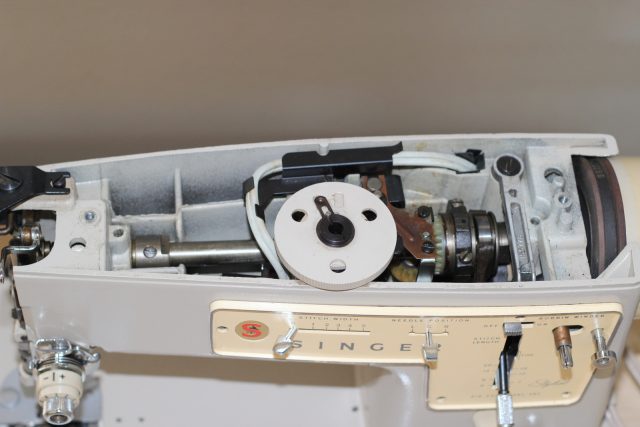
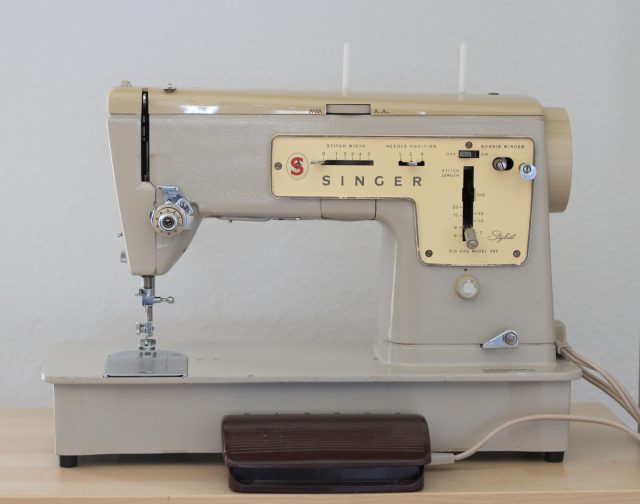
Thanks for sharing. I sew on a vintage Singer 301 but have started having twin needle envy. (The 301 is just straight stitch). We have an old 457 in a cabinet that we were just using as a table. Getting it out and oiled up tonight. Wish me luck!